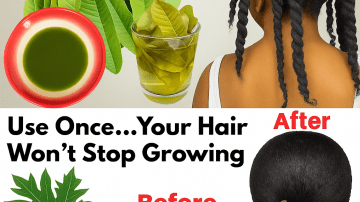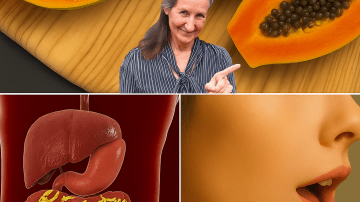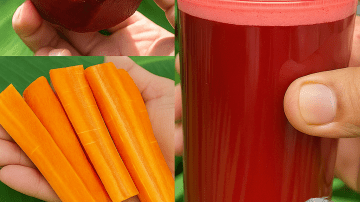Most people do not pay attention to their nails until a problem arises—a painful split, relentless peeling, or a strange discoloration. Strong, healthy nails are often viewed as a mere cosmetic feature, but the truth is far more profound: your nails are a continuously growing reflection of your deepest internal health and nutritional status.

When your nails start showing signs of distress, it’s not a random occurrence; it’s your body sending a subtle, persistent signal that something is fundamentally out of balance—whether it’s a critical nutrient deficiency, chronic dehydration, or an underlying systemic condition. Ignoring these subtle warnings risks delaying the necessary intervention that can prevent larger health issues down the line.
Ready to become fluent in your body’s silent code? Read on to unlock the secrets behind weak nails, identify the three most common nutritional deficits, and discover the essential lifestyle habits that will restore your nails’ strength, flexibility, and natural radiance.
🔬 The Nutritional Deficit: 3 Key Causes of Nail Breakdown
Your nails are primarily made of a protein called keratin. Their resilience is directly influenced by the availability of specific vitamins and minerals that support keratin production and tissue health.
1. 💊 Lack of Biotin (The Split and Peel Crisis)
- The Indicator: Nails that are soft, easily split, or peel frequently in layers.
- The Science: Biotin (Vitamin B7) is essential for supporting the growth and strength of nails, hair, and skin by strengthening the keratin structure.
- The Fix: Boost Biotin Intake. Incorporate natural sources like eggs, almonds, mushrooms, and spinach into your daily diet.
2. 🩸 Iron Deficiency (The Brittle or Spoon-Shaped Sign)
- The Indicator: Nails that are thin, brittle, pale, or, in severe cases, develop a concave, spoon-like shape (koilonychia).
- The Science: Iron is vital for producing hemoglobin, which carries oxygen throughout the body. Without enough oxygen, the growth matrix of the nail plate is compromised.
- The Fix: Increase Iron. Add iron-rich foods such as red meat, lentils, beans, and spinach (paired with Vitamin C for maximum absorption).
3. 💪 Insufficient Protein Intake (The Breakage Issue)
- The Indicator: Frequent nail breakage, slow growth, and a generally weak structure.
- The Science: Keratin is the structure’s foundation. A lack of high-quality protein in the diet means the body lacks the essential amino acids needed to build and repair keratin.
- The Fix: Ensure Complete Protein. Increase your daily intake of lean meats, poultry, fish, legumes, and dairy to provide the necessary amino acids.

💧 The Hydration and Environmental Stressors
Even a perfect diet can be undermined by factors outside your control. Protecting your nails externally is just as crucial as fueling them internally.
4. Dehydration’s Toll on Flexibility
- The Problem: Nails, like skin, lose flexibility when dehydrated, making them brittle and prone to cracking or splitting under minimal stress.
- The Fix: Prioritize Consistent Hydration. Drink plenty of water throughout the day. Complement this with Omega-3 fatty acids (salmon, flaxseeds) which support cell membranes and help the nail plate retain moisture.
5. Chemical Exposure and Stripping
- The Problem: Harsh chemical exposure—from cleaning products, strong detergents, and acetone-based nail polish removers—strips the natural oils from the nail plate.
- The Fix: Protect Your Hands. Always wear gloves when cleaning, washing dishes, or working with chemicals. Switch to acetone-free nail polish remover and use hand creams frequently.
6. Weather and Climate Damage
- The Problem: Cold, dry climates (especially during winter) and constant temperature changes can rapidly dehydrate nails, making them brittle and fragile.
- The Fix: Shield Your Nails. Use rich hand creams, massage nail oils (like cuticle oil or coconut oil) into the nail beds, and wear gloves outdoors in cold weather to create a protective barrier.
🩺 The Deeper Connection: When to Seek Professional Advice
Sometimes, nail changes go beyond simple lifestyle factors and point to underlying medical issues. Persistent or severe changes should never be ignored.
7. Thyroid Disease Indicators
- The Connection: Both overactive and underactive thyroid conditions can severely disrupt cell growth and metabolism, causing nails to become thin, brittle, or slow-growing.
- The Action: If accompanied by fatigue, sudden weight changes, or mood shifts, consult a doctor for a thyroid function test.
8. Fungal and Psoriasis Infections
- The Connection: Fungal infections can cause the nail to become thick, discolored, or brittle. Psoriasis, a skin condition, can also lead to nail pitting or unusual growth.
- The Action: These conditions require targeted antifungal or medical treatments. Do not attempt to self-treat; a dermatologist can provide a fast, accurate diagnosis.
👑 Final Thoughts: Nails as Your Health Mirror
Your nails are not just a canvas for polish; they are a small but important daily indicator of your body’s nutritional status, hydration, and overall health. By paying close attention to these subtle changes, you gain a powerful, early warning system.
Key Takeaways:
- Fuel Keratin: Ensure daily intake of Biotin, Iron, and Protein.
- Hydrate: Drink water and use moisturizing oils regularly.
- Be Gentle: Avoid abrasive chemicals and treat your nails with care.
With consistent nutrition, hydration, and mindfulness, you can enjoy stronger, healthier nails while actively supporting your body’s well-being for years to come.






